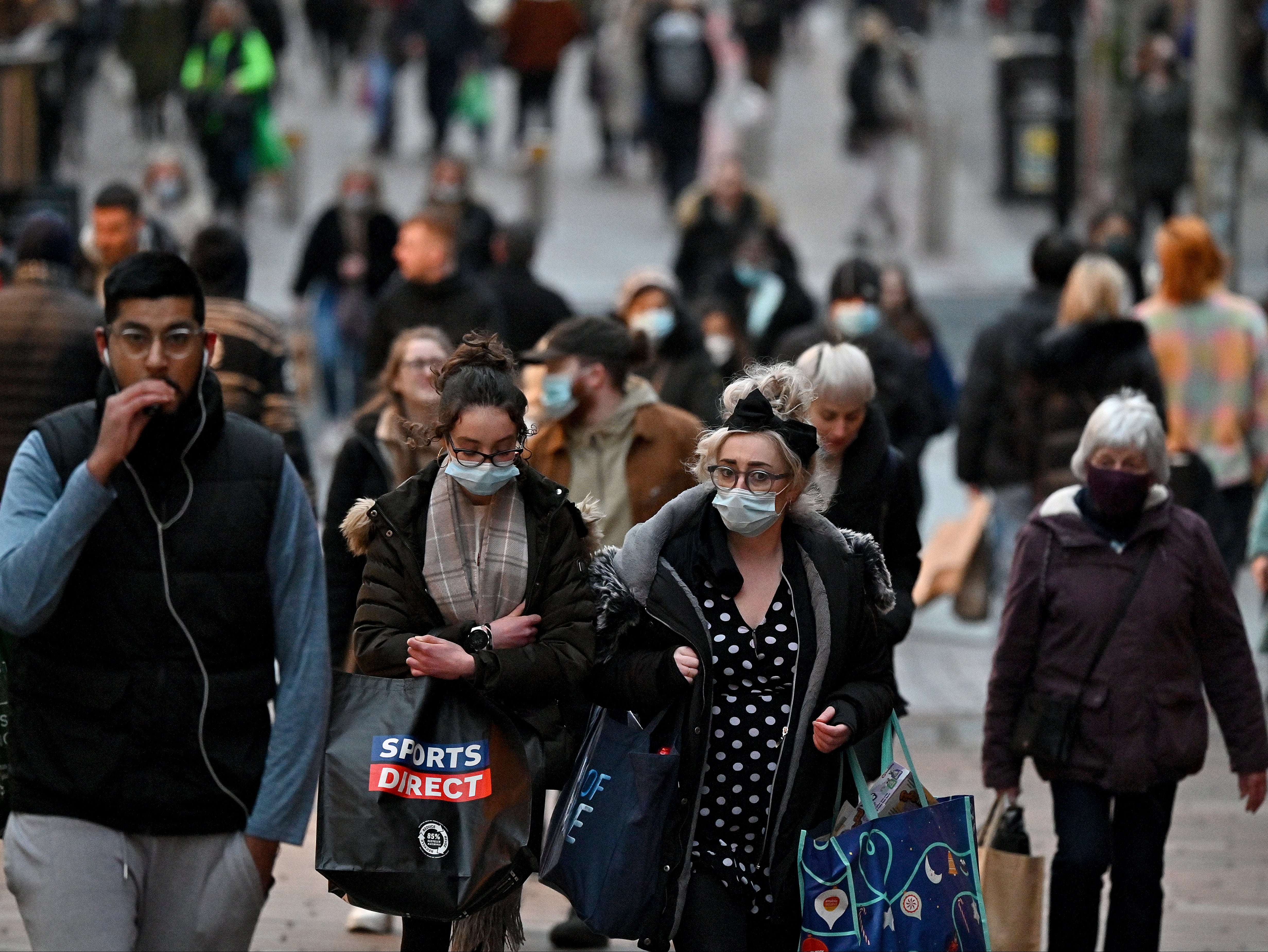Warning signs remain over Omicron – but so does some hope
The mixing of young and old over Christmas is expected to make matters far worse in the coming days and weeks, yet the current situation is not a repeat of last winter’s horrors, writes Samuel Lovett


Christmas may have passed, bringing together hundreds of thousands of infected people across the country, but the picture around Omicron remains just as mixed.
The latest NHS data shows that the seven-day hospital admission rate rose across six out of seven English regions in the week up to 24 December, with London reporting the largest increase, at 62 per cent.
Covid bed occupancy rates are also up. Across England, a total of 8,474 patients were in hospital with the disease on 27 December, compared to 6,688 a week before – a 27 per cent rise.
However, these trends should be taken with a pinch of salt. “People attempt to die over their turkey before coming to hospital in the few days before Christmas,” one doctor tweeted. “Not just for Covid, for everything.”
As such, the Covid hospitalisations that we should have seen over the weekend and in the days before are expected to happen all at once during the coming week, steepening those percentage increases.
The mixing of young and old over Christmas is also expected to make matters far worse. Omicron infections have been rife among younger adults, who have accounted for the bulk of hospital admissions so far, but they have yet to take off in the elderly.
This is likely to change now that the virus has been brought back from the younger, urban centres across England and into the homes of parents and grandparents.
These cohorts are the most protected, with more than 88 per cent of over-60s in England triple-jabbed, so there is hope that their defences will hold up against Omicron.
But if infections are allowed to run dangerously high in this age group, who are more vulnerable to Covid complications than the young, then there will be serious cause for concern.
“Over the last couple of days we’ve had lots of younger people mixing with older adults, and we clearly need to see what impact that’s going to have,” Chris Hopson, chief executive of NHS Providers, told Times Radio on Monday.
Should disease rates and hospitalisations surge among older people in the coming days and weeks, it will intensify pressure on an already strained NHS, which is attempting to battle the current Omicron wave alongside soaring staff shortages and the need to work through its large patient backlog.
This could well be the development that convinces the government of the need for further restrictions, but as has been the case throughout the pandemic, it would be a realisation that comes far too late.
At the same time, perspective should not be lost. The current situation is deeply concerning, leading to hundreds of avoidable deaths, but we are not facing the same horrors as last winter.
Then, 13,431 people across the UK were admitted to hospital in the five days before Christmas. That figure is not expected to be so high this year, with 1,171 hospitalisations on 21 December and the remaining data yet to be published by the government.
Omicron may have changed the rules of engagement, with its problematic immune-evading properties, but so too have the vaccines and the availability of better treatments.
This means that, despite the staggeringly high caseload in the UK, hospitalisations are no longer tracking infections as they once did. The same goes for deaths.
According to the latest available data, 92 people died of Covid on 19 December. On the same day in 2020, a total of 488 fatalities were recorded.
Nonetheless, that we still have up to a thousand people dying every week from this disease shows how far there is to go before we can declare the fight over.
Omicron has made sure of that. The data is slowly but surely beginning to crystallise into something more discernible, with the government rejecting calls for additional measures in the hope that they ultimately won’t be needed.
In the meantime, the clear and obvious warning signs remain – as does the hope.






Join our commenting forum
Join thought-provoking conversations, follow other Independent readers and see their replies
0Comments